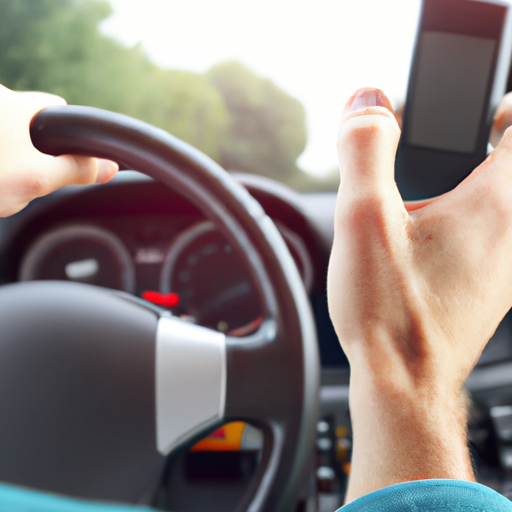
Have you ever wondered how long it takes to install a dash cam on your car? Well, look no further! In this article, we will explore the process of installing a dash cam and give you an idea of just how quick and easy it can be. Whether you’re a seasoned pro or a newbie, we’ve got all the information you need to get your dash cam up and running in no time. So, let’s get started and find out exactly how long it takes to install a dash cam on a car!
This image is property of images.unsplash.com.
Gathering the Necessary Tools and Materials
Identifying the Required Tools
Before you begin the installation process, it’s important to gather all the necessary tools and materials. Some of the tools you will need include a screwdriver (both Phillips and flathead), a panel removal tool, wire cutters, electrical tape, and zip ties. Additionally, you will need some materials such as the dash cam itself, a mounting bracket, a power cable, and a memory card for storing the footage.
Collecting the Essential Materials
In addition to the tools mentioned above, there are a few essential materials you will need for the installation process. Firstly, make sure you have a dash cam that suits your needs. There are various options available, ranging from basic models to more advanced ones with additional features. You will also need a dash cam mounting bracket that attaches to your windshield. Finally, ensure you have a power cable that fits your dash cam and a suitable memory card for storing the recorded footage.
Determining the Mounting Location
Considering Legal Regulations
Before installing your dash cam, it’s crucial to consider the legal regulations regarding its placement. Different jurisdictions may have specific rules about where dash cams can be mounted to ensure visibility is not obstructed. Research your local laws to determine the specific requirements for your area. This will help you avoid any potential legal issues and ensure a safe installation.
Choosing an Optimal Position
Once you are familiar with the legal regulations, it’s time to choose the optimal position for mounting your dash cam. Most commonly, dash cams are placed behind the rearview mirror or on the windshield near the driver’s side. This allows for a clear view of the road ahead and minimizes any potential obstruction. Consider the visibility and comfort while driving when selecting the mounting location for your dash cam.
Preparing the Vehicle
Finding an Access Point for Wiring
To ensure a successful installation, you need to find an access point for wiring your dash cam. Look for a suitable location where you can pass the power cable from the dash cam to the vehicle’s power source. This may involve removing certain panels or accessing the wiring system behind the dashboard. Take your time to find the most convenient and discreet access point for a neat and hidden installation.
Removing Vehicle Panels if Necessary
Depending on the location you have chosen for mounting the dash cam and routing the wiring, you may need to remove vehicle panels. This step will grant you better access to the internal wiring or allow you to hide the wires more effectively. Use a panel removal tool and follow the manufacturer’s instructions to safely remove the panels without causing any damage to your vehicle.
Installing the Dash Cam Bracket
Attaching the Mount to the Windshield
With the access point identified and the vehicle prepared, you can now install the dash cam bracket. Start by attaching the mounting bracket to the windshield using the adhesive or suction cup provided with your dash cam. Ensure the bracket is securely fastened and in the desired position. This will provide a stable base on which to mount your dash cam.
Adjusting the Bracket Position
Once the bracket is firmly attached, take a moment to adjust its position if needed. Ensure that the dash cam is positioned correctly for an optimal viewing angle. You may need to experiment with different positions and angles to find the one that best suits your preferences. Remember to consider visibility, comfort, and any legal regulations when making adjustments.
This image is property of images.unsplash.com.
Routing and Concealing the Wiring
Planning the Wire Path
Now it’s time to plan the wire path from the dash cam to the power source. Routinely, the cable will run along the windshield, behind the rearview mirror, and down the vehicle’s A-pillar. This path allows for a clean and discreet installation, hiding the wires from view. Take into account the length of the cable and any potential obstacles that may obstruct or damage the wire.
Concealing the Wire
To achieve a professional-looking installation, it’s essential to conceal the wires. Start by tucking the wire behind the vehicle’s interior panels, following the planned wire path. Use zip ties or adhesive clips to secure the wire neatly along its route. Ensure the wire is not obstructing any moving parts and does not interfere with your visibility when driving. Taking the time to properly conceal the wires will result in a clean and seamless finish.
Connecting to Power Source
Choosing a Power Option
When connecting your dash cam to the power source, you have a few options to consider. The most common method is to connect the dash cam to the vehicle’s fuse box using an add-a-fuse or hardwire kit. This allows the dash cam to receive power when the ignition is turned on. Alternatively, you may use the 12V cigarette lighter socket or USB port, depending on the dash cam’s power requirements. Choose the method that best suits your needs and vehicle.
Attaching the Power Cable
Once you have determined the power source, it’s time to attach the power cable to the appropriate connection point. Follow the instructions provided by your dash cam manufacturer to ensure a proper and secure connection. Double-check that all connections are tight and secure to prevent any power disruptions. Additionally, make sure the cables are not interfering with any other important vehicle components.
This image is property of images.unsplash.com.
Setting Up the Dash Cam
Inserting the Memory Card
With the power connected, it’s time to set up your dash cam. Start by inserting the memory card into the designated slot, as indicated by your dash cam’s instructions. Make sure the memory card is properly inserted and securely seated to avoid any issues with recording or playback. Select a memory card with sufficient capacity to store the desired amount of footage based on your dash cam’s recording settings.
Adjusting the Camera’s Position
Once the memory card is inserted, take a moment to adjust the camera’s position. Ensure that the lens is facing the correct direction, providing a clear view of the road ahead. Make any necessary adjustments to achieve the desired viewing angle. It’s essential to test different positions to find the one that offers the best visibility and captures the necessary details for your specific needs.
Testing the Dash Cam
Turning on the Power
Before hitting the road, it’s crucial to test the dash cam’s functionality. Turn on the power to ensure that the dash cam powers on properly and starts recording. Check that the dash cam’s display or indicator lights are functioning correctly. If the dash cam has any additional features, such as GPS or Wi-Fi, test them to make sure they are working as expected. This testing phase will give you peace of mind and allow you to address any issues before heading out on the road.
Checking Dash Cam Functionality
While the dash cam is recording, take a moment to review the footage and check the camera’s functionality. Ensure that the recorded video quality meets your expectations and that there are no issues with the audio. Additionally, test any advanced features your dash cam may have, such as parking mode or collision detection. This step will allow you to address any potential issues or fine-tune the settings for optimal performance.

Completing the Installation
Securing Any Loose Wires
After testing the dash cam’s functionality, it’s important to secure any loose wires that may be visible or at risk of interference. Use zip ties or adhesive clips to tidy up any exposed wires and prevent them from moving or tangling while driving. Double-check that all connections are secure and that there are no loose or dangling wires that could pose a safety hazard or distraction.
Finalizing the Mounting
With the wires secured, take a moment to finalize the mounting of the dash cam. Ensure that the camera is firmly attached to the bracket and that the bracket is securely fastened to the windshield. Test the stability of the mount by lightly shaking the dash cam. If it feels loose or unstable, make any necessary adjustments or consider using a different mounting method to ensure a secure fit.
Ensuring Proper Functionality
Verifying Video Recording
To ensure proper functionality, it’s crucial to verify that the dash cam is recording video as intended. Take a short drive and check that the dash cam is capturing clear footage of the road ahead. Pay attention to any potential issues such as video distortion or blurriness. If you notice any problems, review the installation steps to identify and address the underlying cause.
Confirming Additional Features
If your dash cam has additional features such as GPS, motion detection, or parking mode, it’s important to confirm their proper functioning. Test each feature individually to ensure it operates as described in the manufacturer’s instructions. For example, test the GPS feature by reviewing the recorded footage and checking for accurate speed and location information. Confirming the functionality of these additional features will help you maximize the benefits of your dash cam.
In conclusion, installing a dash cam on your car can provide valuable video evidence in case of accidents or other incidents on the road. By following the step-by-step guide outlined above, you can confidently install a dash cam that meets your needs and preferences. Remember to consider legal regulations, choose an optimal mounting location, and route and conceal the wiring properly for a clean and discreet installation. Testing the dash cam’s functionality and ensuring proper operation will provide you with peace of mind while driving, knowing that you have a reliable and functional dash cam installed in your vehicle.



